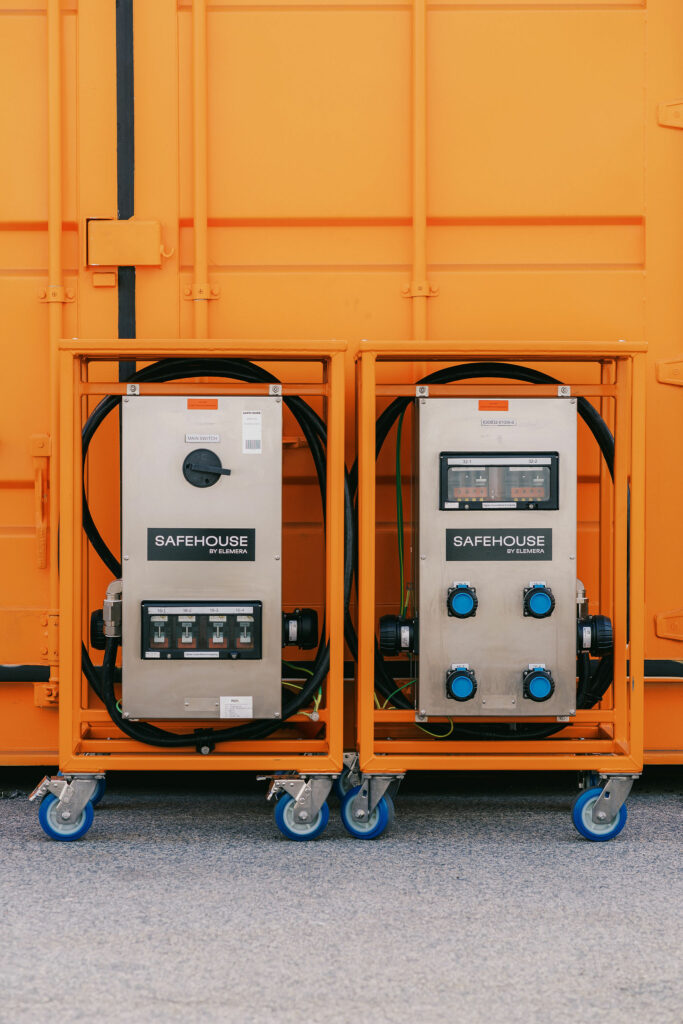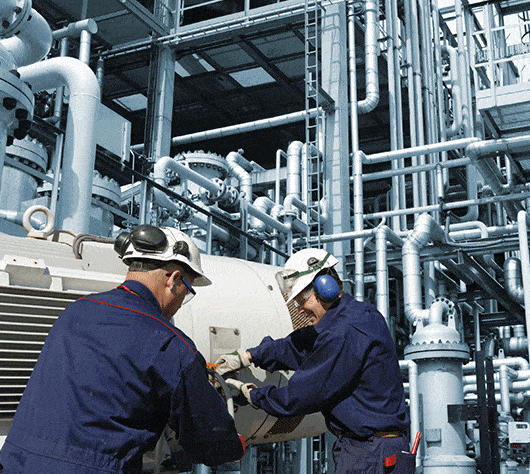Roar Solutions Fundamentals Explained
Roar Solutions Fundamentals Explained
Blog Article
Some Ideas on Roar Solutions You Should Know
Table of ContentsThe Basic Principles Of Roar Solutions Not known Facts About Roar SolutionsSee This Report on Roar Solutions
In order to secure installations from a possible surge a method of evaluating and identifying a potentially unsafe location is called for. The purpose of this is to guarantee the correct selection and installment of equipment to eventually protect against a surge and to make sure safety of life.
(https://www.dreamstime.com/thomascarrillo4740_info)
No devices must be installed where the surface temperature of the equipment is higher than the ignition temperature level of the given threat. Below are some common dust unsafe and their minimum ignition temperature level. Coal Dirt 380C 225C Polythene 420C (melts) Methyl Cellulose 420C 320C Starch 460C 435C Flour 490C 340C Sugar 490C 460C Grain Dust 510C 300C Phenolic Material 530C > 450C Aluminium 590C > 450C PVC 700C > 450C Soot 810C 570C The probability of the hazard being existing in a concentration high sufficient to trigger an ignition will differ from area to area.
In order to categorize this danger a setup is divided right into locations of danger depending upon the amount of time the dangerous exists. These locations are referred to as Areas. For gases and vapours and dirts and fibers there are three areas. Area 0 Area 20 A harmful environment is highly most likely to be present and might be present for lengthy periods of time (> 1000 hours annually) or perhaps constantly Zone 1 Area 21 A dangerous environment is possible but not likely to be present for extended periods of time (> 10 450 C [842 F] A category of T6 suggests the minimal ignition temperature is > 85 C [185 F] Unsafe location electrical equipment maybe developed for usage in greater ambient temperatures. This would certainly showed on the score plate e.g. EExe II C T3 Ta + 60C( This means at 60C ambient T3 will not be surpassed) T1 T1, T2, T3, T4, T5, T6 T2 T2, T3, T4, T5, T6 T3 T3, T4, T5, T6 T4 T4, T5, T6 T5 T5, T6 T6 T6 A T Class score of T1 indicates the maximum surface area temperature produced by the instrument at 40 C is 450 C. Presuming the connected T Course and Temperature level score for the tools are appropriate for the area, you can always use an instrument with an extra strict Department score than needed for the area. There isn't a clear answer to this inquiry. It truly does rely on the kind of devices and what repair work require to be performed. Equipment with certain examination treatments that can not be performed in the field in order to achieve/maintain 3rd party score. Should return to the manufacturing facility if it is prior to the devices's solution. Area Repair By Authorised Personnel: Challenging screening may not be required however certain procedures may require to be adhered to in order for the devices to preserve its 3rd party score. Authorized personnel must be employed to carry out the job properly Fixing should be a like for like substitute. New component have to be taken into consideration as a straight replacement needing no unique screening of the equipment after the repair is total. Each item of devices with a hazardous rating ought to be assessed separately. These are described at a high level listed below, but for even more comprehensive information, please refer straight to the guidelines.
Facts About Roar Solutions Uncovered
The tools register is an extensive database of devices records that includes a minimum collection of fields to determine each product's place, technological specifications, Ex lover classification, age, and environmental information. This details is important for tracking and handling the tools successfully within hazardous locations. On the other hand, for routine or RBI sampling examinations, the grade will be a mix of Comprehensive and Close inspections. The ratio of Thorough to Close assessments will certainly be established by the Tools Threat, which is assessed based on ignition risk (the possibility of a source of ignition versus the chance of a combustible environment )and the hazardous location category
( Area 0, 1, or 2). This variation will additionally influence the resourcing demands for job preparation. When Lots are defined, you can establish tasting plans based upon the example dimension of each Whole lot, which describes the variety of random equipment products to be examined. To identify the required example size, two facets need to be assessed: the size of the Great deal and the classification of examination, which suggests the degree of effort that ought to be applied( decreased, normal, or enhanced )to the assessment of the Whole lot. By incorporating the category of examination with the Lot dimension, you can after that develop the appropriate rejection requirements for an example, suggesting the allowed number of malfunctioning products located within that sample. For even more details on this procedure, please describe the Energy Institute Standards. The IEC 60079 standard recommends that the maximum interval in between inspections must not exceed 3 years. EEHA examinations will additionally be performed outside of RBI projects as part of set up upkeep and equipment overhauls or repairs. These assessments can be attributed towards the RBI sample dimensions within the affected Whole lots. EEHA examinations are carried out to determine faults in electrical tools. A heavy scoring system is important, as a solitary piece of tools might have several mistakes, each with varying degrees of ignition threat. If the consolidated score of both inspections is less than twice the mistake rating, the Great deal is regarded appropriate. If the Great deal is still taken into consideration inappropriate, it has to undergo a full examination or validation, which might set off stricter assessment procedures. Accepted Whole lot: The sources of any type of faults are identified. If a common failing setting is found, added equipment may call for examination and repair service. Mistakes are classified by seriousness( Safety and security, Honesty, Housekeeping ), ensuring that immediate issues are assessed and resolved immediately to alleviate any type of impact on safety and security or procedures. The EEHA data source should track and record the lifecycle of mistakes together with the corrective actions taken. Executing a durable Risk-Based Examination( RBI )technique is important for making certain conformity and safety in handling Electrical Devices in Hazardous Areas( EEHA) (hazardous area course). Automated Mistake Scoring and Lifecycle Monitoring: Effortlessly take care of mistakes and track their lifecycle to boost inspection precision. The intro of this support for risk-based evaluation further reinforces Inspectivity's position as a best-in-class remedy for regulatory conformity, along with for any asset-centric inspection usage instance. If you want finding out more, we invite you to request a presentation and find exactly how our option web link can change your EEHA management processes.
Roar Solutions Fundamentals Explained

In terms of explosive risk, a harmful area is an atmosphere in which an explosive ambience is existing (or may be expected to be present) in quantities that require unique precautions for the building, installation and use of tools. electrical refresher course. In this post we explore the challenges dealt with in the workplace, the threat control measures, and the called for expertises to function securely
It issues of contemporary life that we manufacture, keep or take care of a series of gases or fluids that are deemed combustible, and a series of dusts that are deemed flammable. These substances can, in certain conditions, develop eruptive environments and these can have major and unfortunate effects. A lot of us recognize with the fire triangle eliminate any type of one of the three elements and the fire can not occur, but what does this mean in the context of dangerous areas? When damaging this down into its most basic terms it is basically: a combination of a particular amount of release or leakage of a particular substance or material, blending with ambient oxygen, and the presence of a source of ignition.
In most circumstances, we can do little about the degrees of oxygen in the air, yet we can have substantial influence on sources of ignition, for instance electrical equipment. Harmful locations are recorded on the dangerous area category drawing and are determined on-site by the triangular "EX" sign. Below, among other key info, areas are split into three types depending on the threat, the probability and duration that an explosive environment will exist; Area 0 or 20 is regarded one of the most hazardous and Area 2 or 22 is considered the least.
Report this page